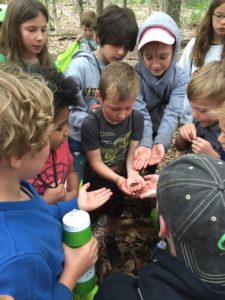Values are Virtues in Action
By CPMAstudio In InsightWe had very clear goals and a strong vision for what we wanted the studio to be and to feel like, and how we were going to define success for ourselves and for the families who enrolled. Values were a huge part of that, and we came up with what we felt were a solid set of values, including respect for others, our community and ourselves. The doors opened, families enrolled, employees were hired, and three-and-a-half years later we’re still here. Kids are learning, parents appreciate what we are doing. Our Values must be working. Good. Done. Next.
Not Exactly.
Values are more than vague affirmations or noble ideals. They are surprisingly difficult to pin down. It is one thing to say that we “treat each other with respect”, but what is that exactly? How do we create the kind of behavior we want to see?
We’re starting to learn that values are verbs. Values are active, and come alive when you translate them into a series of simple actions or behaviors. We call everyone “Sir”, and “Ma’am”, even kids, so when we ask them to call us “Sir” and “Ma’am” they know we already show them respect through how we address them. We ask children to keep their hands to themselves, and to clean up their table or activity when they are done with it, so it ready for the next person. So, we always refer back to the original value, but do it through simple, basic actions that anyone can understand emulate. We greet everyone who comes into the studio as soon as we see them, so they know they are welcome.
Simple. Repeatable. Actions.
Wonderful, you may be saying. But kids need to respect adults for different reasons than adults need to respect kids. How does that work? Again, it is about actions. Kids ask adults questions, kids want adults to do things for them; and the same is true in the other direction. Underneath all of it, though, kids want things to be fair, just like we do. We consistently show kids respect by:
- Answering their questions patiently (even if the answer is “no, you may not”),
- Making eye contact with them when we speak to them,
- Speaking to them at their level (literally, we take a knee to talk to small kids, so we are not booming at them from on high),
- Using the same friendly tone of voice we want them to use with us and,
- Answering their questions truthfully (you are not having a different snack like so-and-so does because you do not have a nut allergy, so you can enjoy the same snack all of the other kids are having, aren’t you lucky?)
These actions are simple, easy to replicate, easy to understand, and teach to the value. We then require children to do these same actions with the staff, other children, and with their parents, grandparents when they are getting picked up or dropped off. It goes both ways. We also employ the same behaviors within the teaching team. Once we began defining our values as verbs, things really changed for the better. We’re looking forward to the next challenge, and the next stage of growth for ourselves our studio and our community.




